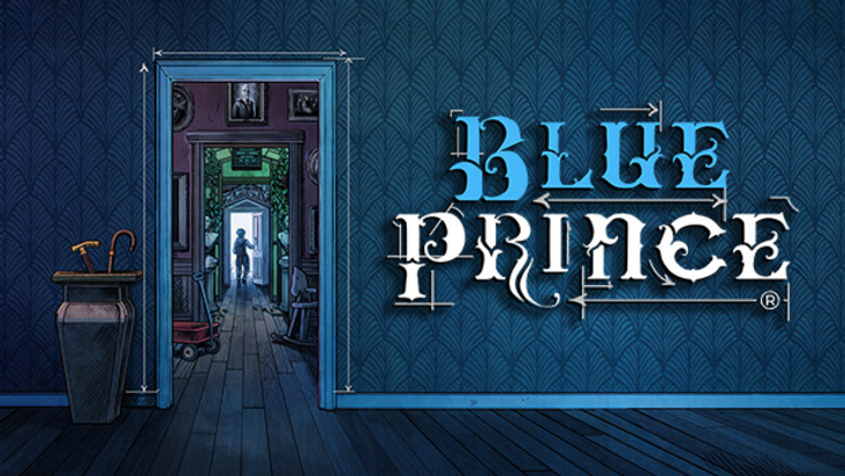Blue Prince Review
There is a detective in all of us. All of us want to, in some way, solve a mystery about something, however small, however meaningless, just use our little logic brains to answer a question. It can lead us to look for mysteries where they might not be one, or to pick away at something benign until some grand mystery is revealed. This is part of why the true crime genre is so massive. Each of us, when confronted with some tragedy, wants to believe we could be the one to crack everything wide open, to succeed where the establishment has so resolutely failed.
We never will be, but that doesn’t mean that Blue Prince doesn’t in some way scratch that itch.
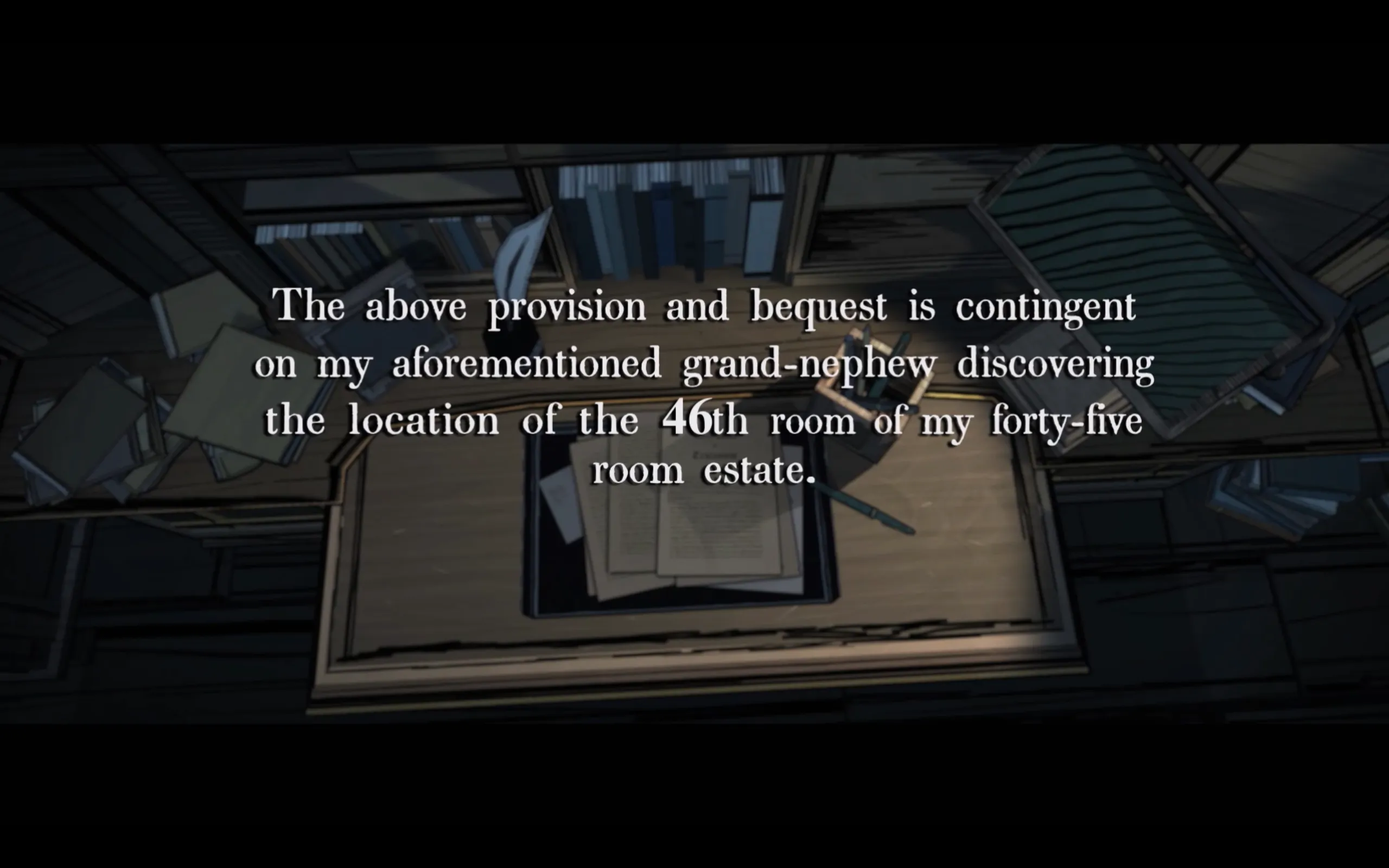 Millennials will do anything to own a house.
Millennials will do anything to own a house.
Blue Prince is a puzzle game. Players play as Simon, the young inheritor of the Mt. Holly estate, a vast house on the outskirts of a picturesque town. Simon, to become the full inheritor of Mt. Holly, must solve the mystery of the house by making his way to the 46th room. Getting there requires placing rooms in the blueprints of the house, unlocking paths, and understanding some of the mystery of how the house itself works.
For those who are fans of board games, there are many elements of Blue Prince that will be familiar. The categorisation and intricacy of room placement comes straight from Castles of Mad King Ludwig, even if the reasons for room placement are entirely different. The game’s art style is evocative of Castles, and the look and feel of it as a home for the mad buried deep in a mountainside can’t help but be analogous to the eponymous Ludwig, nestled in his castles in Bavaria.
However, this game is very much not Castles of Mad King Ludwig. It instead takes some of the mechanics of slotting rooms into place, combines them with the type of riddles and Rube Goldberg-esque mechanics of an escape room, and creates a puzzle system that draws the player deeper and deeper into their own unique flavour of madness.
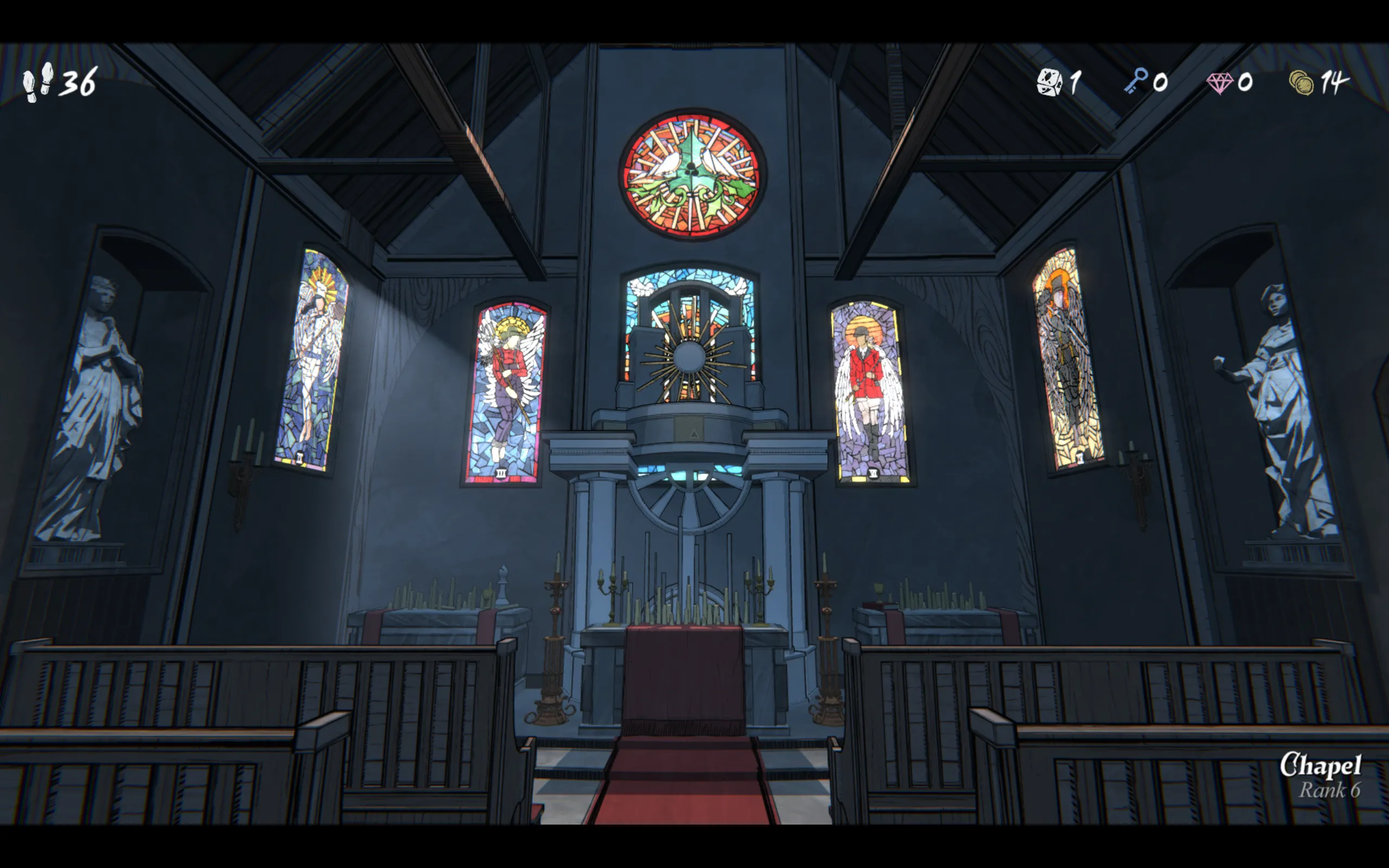 There's a meaning to the windows, isn't there?
There's a meaning to the windows, isn't there?
The madness of Blue Prince is subtle in how it grabs you. When the game first begins, the problem seems simple enough to solve - make it to the 46th room. To make it there, Simon must solve a long series of puzzles, with the existence of these puzzles themselves sometimes being hidden. As an example, to make it to the 46th room, I found myself having to find a specific key that I had accessed by solving a dartboard puzzle that I found when I chained a set of corridors together that I unlocked by modifying blueprints using a floppy disc that I plugged into a computer that controlled the security apparatus, but also through going the wrong way into a specific room, all in the same run. Much of that doesn’t make sense, nor is it supposed to - it’s not until you’re deep in the game that the fact that this is a deep, tens of hours long game become clear. What you’re presented with from the outset - an antechamber and the premise of a 46th room - doesn’t become clear about what it is until you’re so deep that you’re counting the bricks on the wall of a room you’ve been through countless times before.
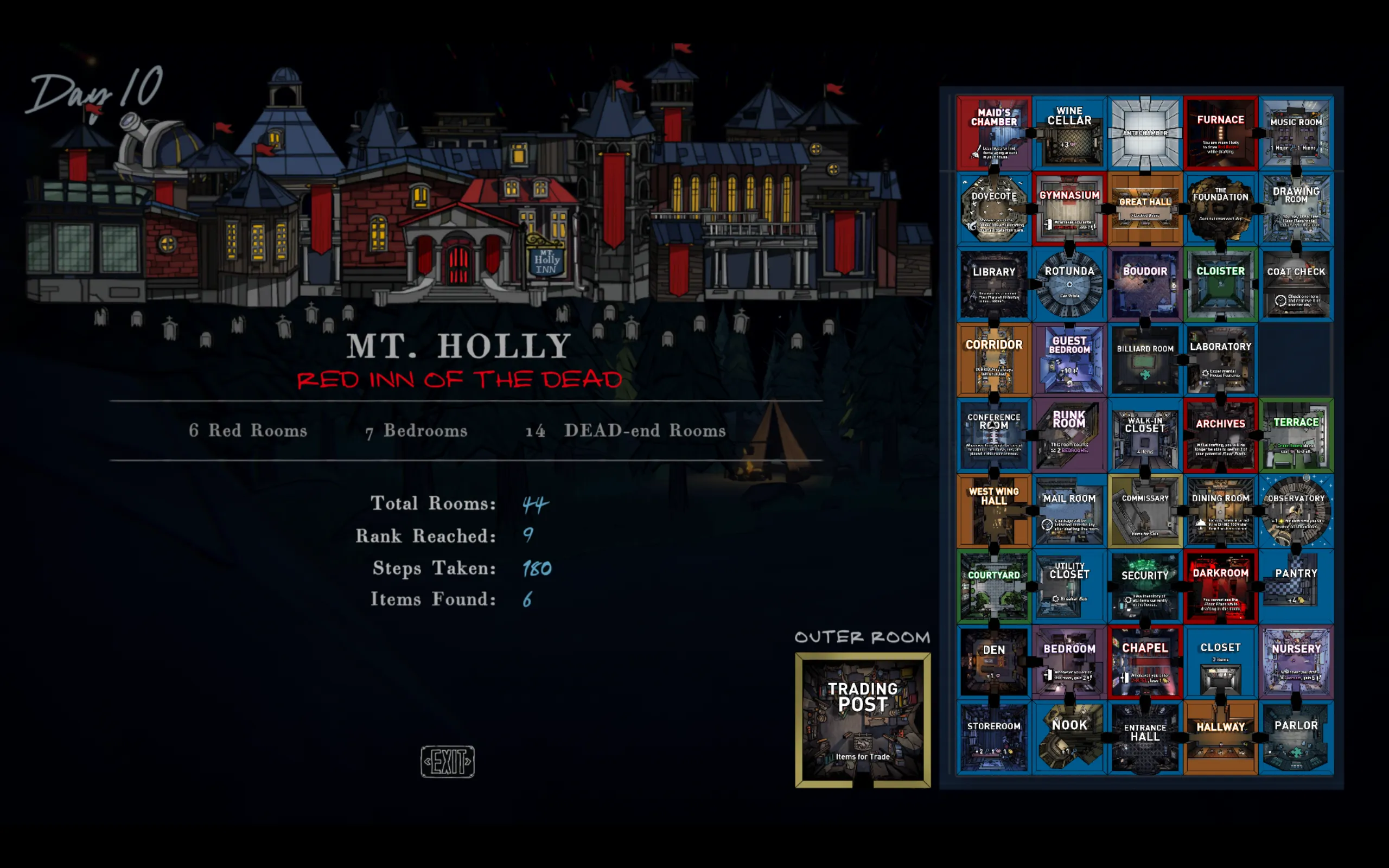 I can show you this, and I'm 99% sure it's not spoilers, because you have no idea what you're looking at, let alone how to get here.
I can show you this, and I'm 99% sure it's not spoilers, because you have no idea what you're looking at, let alone how to get here.
Blue Prince, in addition to being a puzzle game, also has significant roguelike elements, with the game taking place over the course of several days. After each day, the house resets, challenging the player to accomplish as much as possible in the time they have. This system in many ways contributes to the addictive nature of the game. Each run provides ways to improve the next run in small ways, while also reassuring the player that, if the randomness of any given run botches the day, the next day provides a new possibility to get it right. At the same time, I found exactly that randomness to be one of the biggest frustrations with the game. At about the point that I needed to get three specific rooms beside each other without drawing them for three days in a row and not otherwise making progress, I started wanting to put the game down.
But on the other hand, that frustration can also lead players to re-examine some of the game’s many, many other puzzles, looking at something they’d previously dismissed with fresh eyes in the hopes that there might be progression somewhere else instead. There is absolutely no shortage of things to do and think about in this game, ensuring that no one element necessarily becomes overwhelming, even if only one path currently seems open.
It’s this sense of potential yet subtle progression that kept me coming back and kept the game addictive. I wanted to believe I could solve it, and when I did, it felt earned.
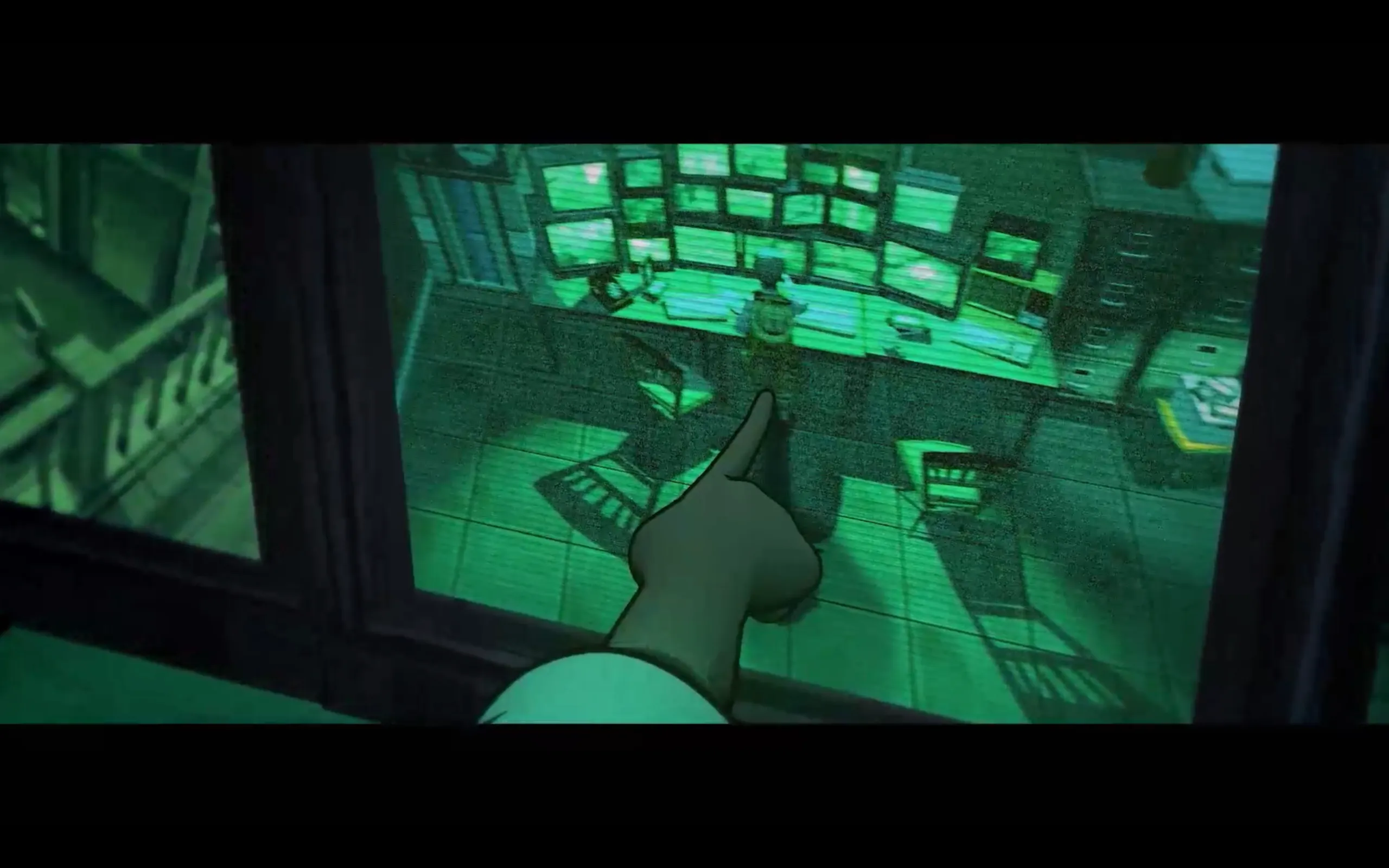 A clue! A clue!
A clue! A clue!
Describing Blue Prince as a puzzle game does it a disservice. This is a mystery game, and it does a phenomenal job making the fact that that’s what it is a discovery unto itself. This isn’t a game to be solved, per se, but rather to be picked at and unravelled. Making any discovery is immensely satisfying, and its randomised, roguelike nature makes each run feel unique and personal. It’s a masterclass in involved storytelling, and I adored it.
Developer: Dogubomb
Genre: Puzzle
Year: 2025
Country: United States
Language: English
Time to complete: 20-30 hours
Playthrough: https://youtu.be/9a_NcPumL7s
